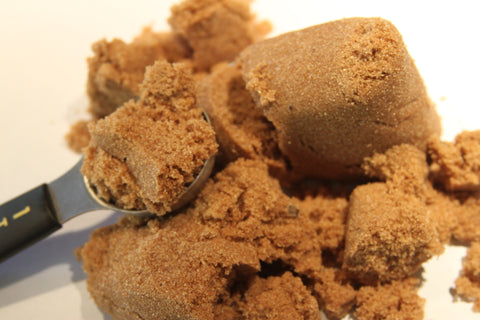With so many options available these days to sweeten food, it’s important to know the difference between them. We’ve come a lot farther since the days of pure cane sugar, whether we sweeten foods with chemically-synthesized compounds such as aspartame (found in diet soda drinks) or with newer and supposedly more natural ingredients such as stevia, which comes from the leaves of the plant Stevia rebaudiana. With companies using an increasing variety of sweeteners, such as Coca-Cola recently announcing a new stevia-sweetened drink called Coca-Cola Life, it’s good to know the difference between these sweet and sometimes not-so-sweet treats.
A few common artificial sweeteners can be classified as synthesized compounds and sugars. Aspartame is a well-known ingredient of this kind as found in diet sodas, but the most common of this type includes fructose, sucrose, and glucose as well as high fructose corn syrup. These types of sweeteners are carbohydrates, or simple sugars – but don’t be fooled, as a diet with too much of these compounds as additives in foods can lead to type 2 diabetes and a host of other diseases. A good rule of thumb when decoding the ingredient label is to see whether any of the ingredients have the suffix ‘-ose,’ or rather, look out for any ingredient that rhymes with gross!

The next category of sweeteners is an alternative to sucrose and fructose: syrups. Unlike high fructose corn syrup, however, these syrups are not composed of sucrose. This category also includes stevia and agave, which is derived from a plant, but is really the syrup of the part of the agave plant, which is also a key ingredient in tequila. Other than agave, tapioca syrup and brown rice syrup are sucrose alternatives. Tapioca syrup contains fewer carbohydrates and is lower in calories, while brown rice syrup is a complex carbohydrate that is significantly less sweet and does not result in the crash that other sweeteners often can bring about.
The simplest kinds of sweeteners, however, are most often found in foods that are already themselves sweet and therefore do not need to be isolated and incorporated as additives. While brown rice syrup and the like are great for adding texture and flavor, eating whole foods is important as well. Honey, for example, is a simple sugar made of fructose and glucose, but is also itself a whole food with many other beneficial properties such as flavonoids, which are antioxidants that can help reduce the risk of certain types of cancer and heart disease. Also in this category are dates and coconut nectar, which also contain other types of sugars, but importantly, do not need be to processed and broken down. So when you need to satisfy your sweet tooth, reach for the whole foods – or grab a Rise Bar, which contain these same natural ingredients!




